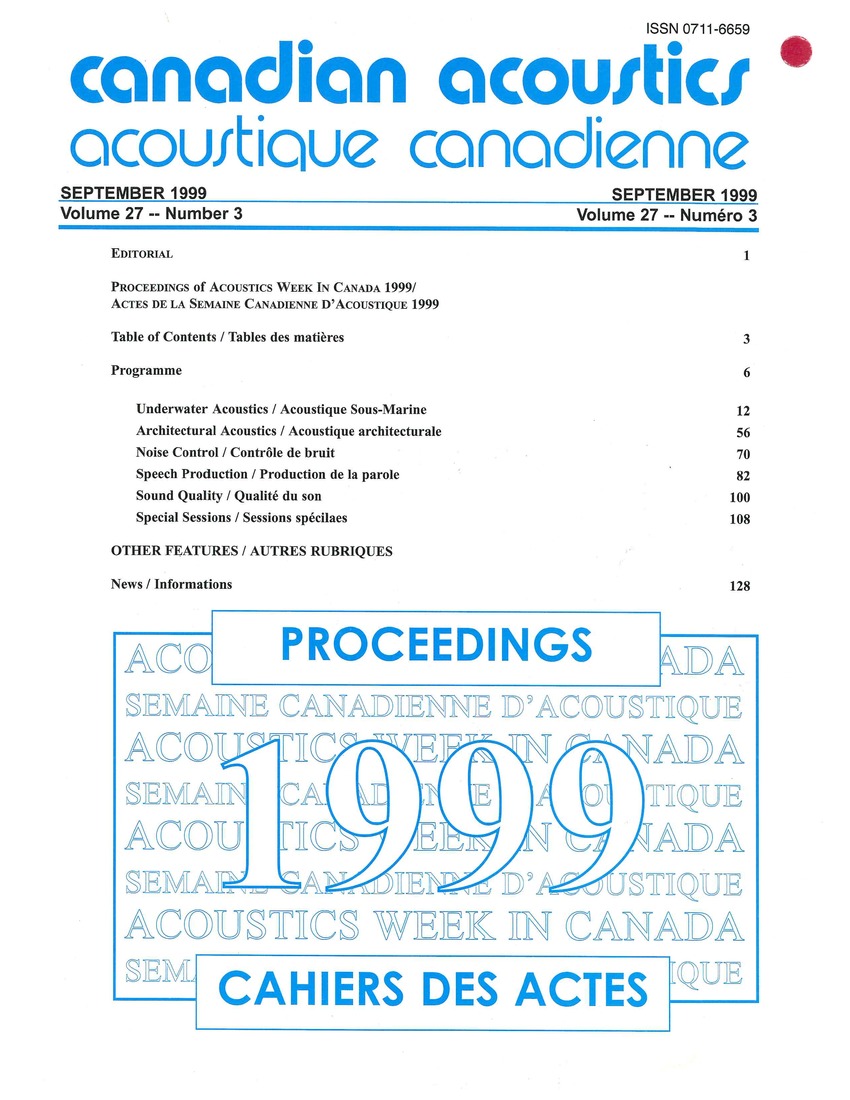Measurement of underwater sound intensity vector
Résumé
Localization of underwater sound sources and characterization of ambient noise fields can be achieved through measurement of the sound intensity vector. To evaluate this concept, a passive hydrophone array called SIRA (Sound Intensity Receiver Array) has been developed for measurement of underwater sound intensity in the frequency range 100 to 6000 Hz. The array is composed of three pairs of omni-directional hydrophones with the pairs aligned along orthogonal axes. The intensity is the time average of the product of instantaneous acoustic pressure and particle velocity. The instantaneous pressure is the average of the pressures measured by a hydrophone pair and the velocity is derived from the pressure gradient. Each hydrophone pair provides one of the components of the three dimensional intensity vector.Fichiers supplémentaires
Publié-e
Comment citer
Numéro
Rubrique
Licence
Author Licensing Addendum
This Licensing Addendum ("Addendum") is entered into between the undersigned Author(s) and Canadian Acoustics journal published by the Canadian Acoustical Association (hereinafter referred to as the "Publisher"). The Author(s) and the Publisher agree as follows:
-
Retained Rights: The Author(s) retain(s) the following rights:
- The right to reproduce, distribute, and publicly display the Work on the Author's personal website or the website of the Author's institution.
- The right to use the Work in the Author's teaching activities and presentations.
- The right to include the Work in a compilation for the Author's personal use, not for sale.
-
Grant of License: The Author(s) grant(s) to the Publisher a worldwide exclusive license to publish, reproduce, distribute, and display the Work in Canadian Acoustics and any other formats and media deemed appropriate by the Publisher.
-
Attribution: The Publisher agrees to include proper attribution to the Author(s) in all publications and reproductions of the Work.
-
No Conflict: This Addendum is intended to be in harmony with, and not in conflict with, the terms and conditions of the original agreement entered into between the Author(s) and the Publisher.
-
Copyright Clause: Copyright on articles is held by the Author(s). The corresponding Author has the right to grant on behalf of all Authors and does grant on behalf of all Authors, a worldwide exclusive license to the Publisher and its licensees in perpetuity, in all forms, formats, and media (whether known now or created in the future), including but not limited to the rights to publish, reproduce, distribute, display, store, translate, create adaptations, reprints, include within collections, and create summaries, extracts, and/or abstracts of the Contribution.


